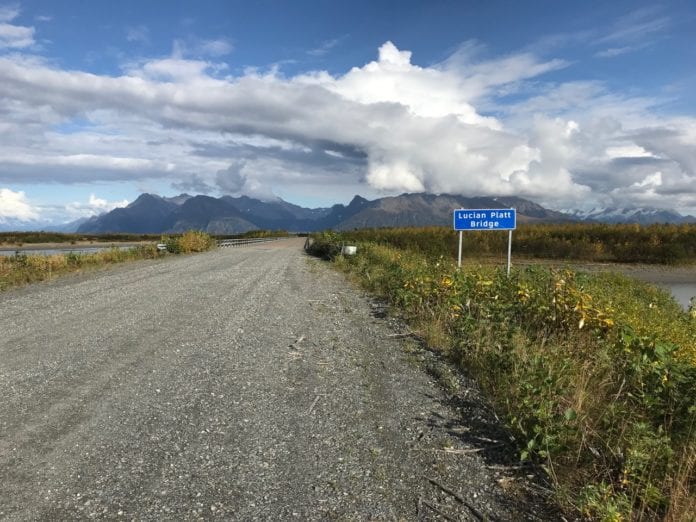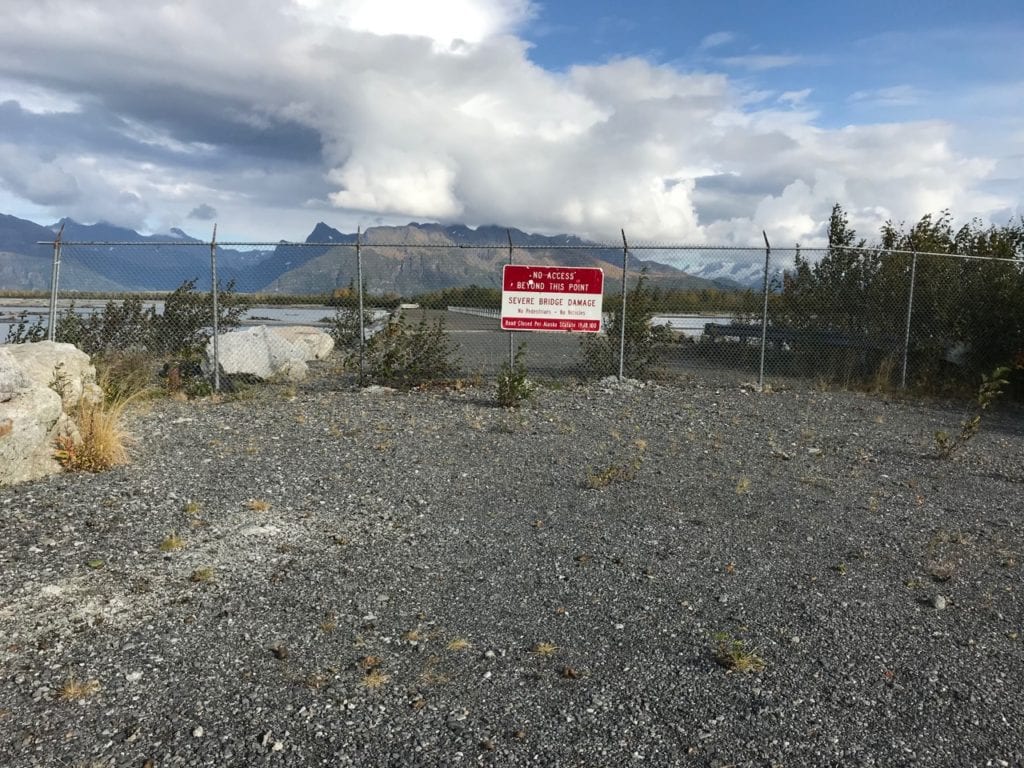
Last week article’s about bridge name signs gave some background into the process that resulted in their installation to honor Cordova veterans who gave their lives defending our country.
This week the focus is on bridges named for servicemen who were lost in World War I. In a way, it seems logical to start in that order, although the bridges are named in the opposite order, with the bridges furthest from town being named for WWI honorees.
In an unfortunate twist, three of the bridges that were to have names are no longer intact or approachable, due to the washout at 36.2 Mile.
One of these bridges, listed as #345, is at Mile 37.9 on the other side of the washout. It was to be named the James Bennett Bridge.
Bennett was the first Cordovan lost in World War I. He was born on April 7, 1892 in Canada, and while assigned to Company C, 18th Engineers Railway Regiment, died on June 29, 1918. His assignment to a railway regiment makes sense, as he was formerly an engineer on the Copper River and Northwestern Railway (CR&NWR) that hauled copper ore from the mines at Kennecott to Cordova.
Bennett left Cordova on March 15, 1918 by the steamer Northwestern to enlist in the Thirty First Engineers at Fort Lawton, Washington. He drowned while swimming in a river near his camp in Samur, France. The Aug. 26, 1918 edition of The Cordova Daily Times stated that “The sad news is conveyed in a copy of ‘The Spiker’, published by the men of his regiment.” Cause of death was believed to be heart failure while in the water. He was buried in the cemetery near Base Hospital No. 6. in France.
Bridge #342, at Mile 37.0, also on the other side of the washout, was to be named the William Morris Jones Bridge. Jones was born on March 1, 1895, in Remsen, New York, and died on July 26, 1918. He served in Company C, Thirty-first Engineers, and was formerly a CR&NWR locomotive fireman. He died of head injuries while performing his duties on a moving train. Jones complained of not feeling well, went to an open window for fresh air, and was struck by a pole. It was stated that clearance on the French railroads was not as wide as it was on American railroad.
The Flag Point West Bridge at Mile 26.7 is named after his brother John W. Jones, who died in action three months later on Nov. 3, 1918 in the battle at Argonne Forest, France. John, the older brother of William Jones, was born on Nov. 22, 1893, also in Remsen, NY. He too, was an employee of the CR&NWR prior to entering the service.
Four months prior to his death, John, a Marine, was awarded the French Croix de Guerre, a medal that recognized acts of bravery, for his actions on July 18, 1918, when under heavy shell fire, he helped carry his severely wounded company commander three kilometers to an ambulance station near Vierzey.
He died eight days before the end of the war.
The Jones brothers were the only sons of Owen and Mary Jones, who were listed as residents of Mile 89, Cordova.
A memorial service to honor John Jones, William Jones, and James Bennett was held at the Empress Theatre in Cordova on March 22, 1919. On May 30, 1919 a concrete monument dedicated to the three was unveiled on Flag Hill in Cordova, which was just past the Masonic Lodge at that time.
A bronze memorial tablet listing the names of Bennett, both Jones, and Lucian Platt was installed on the monument on March 6, 1920.
Shortly after that, the headlines in article in the Saturday, May 29, 1920 edition of the Cordova Daily Times stated, “Legion post is organized in Cordova,” and that post was soon named the John W. Jones Post in his honor.
The plaque on the monument was removed when Flag Hill was taken down and First Street was widened. It was displayed with honor in the old museum, and is currently in storage at the new museum.

Bridge #339, located at 36.2 mile, is the one that washed out. It was to be named after Steven Green. Green was born on July 22, 1894 in Poland and died on Oct. 22, 1918 at the base hospital at Camp Dodge, Iowa from influenza, where at risk to his own life he had been helping to fight the Spanish influenza. He served in Company C, 14th Infantry, and was formerly a CR&NWR longshoreman for two years. The influenza epidemic to a terrible toll on servicemen. At Camp Dodge alone, 700 soldiers died, including 75 from Alaska.
The approach to bridge that was to be named in his honor is closed off by a tall fence, with a sign indicating No Access Beyond This Point, due to Severe Bridge Damage.
Bridge #334, at 34.6 Mile, is the first bridge toward town now bearing a Cordova veteran’s name. Lucian Platt was born on Jan. 28, 1892 in Baltimore, Maryland. Platt served as a Lieutenant in the U.S. Army, after passing the examination for such a promotion at Fort Liscum with high marks. Platt was a Shift Boss at the Coffey Mine at Kennecott before entering the service. He died on Oct. 9, 2018 in Camp Humphrey, Virginia from pneumonia.
Little is known about the servicemen honored in the next two bridges.
The Round Island bridge at 36.2 Mile is named in honor of Mathew Anderson, who died on Oct. 28, 1918. Anderson was born in Denmark on March 18, 1892 and was formerly a fisherman in Cordova.
The Flag Point East bridge at 26.9 is named in honor or W.H. Mumby. A brief article in the Thursday, Nov. 7, 1918 edition of The Cordova Daily Times headlined “Cordova is killed on Western front” reads “Ottawa, Nov. 7 — W.H. Mumby of Cordova was killed in action on the Western front recently.”
Dixie Lambert, who did much research on all the veterans, felt Mumby may have been a Canadian who was working in Cordova on the railroad, as ancestry.com has a short listing for a W.H. Mumby who died about Sept. 26, 1918 under the Canadian graves registry.
This completes the list of bridges named in honor of WWI veterans, including the mysterious W.H. Mumby.
It is noteworthy that six of the seven were at one time employees of the CR&NWR, reflecting the importance of the railway on Cordova during that era.
Also, in the midst of the COVID-19 pandemic, the staggering impact of the Spanish flu and related pneumonia on American troops in WWI cannot be overstated.
America lost 116,516 troops in that war. More were lost due to disease (63,114) than to combat (53,402), largely due to the influenza epidemic of 1918. Cordovans Steven Green and Lucian Platt were among those victims.
Next week: Cordova servicemen who gave their lives in WWII.














